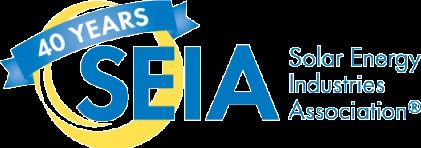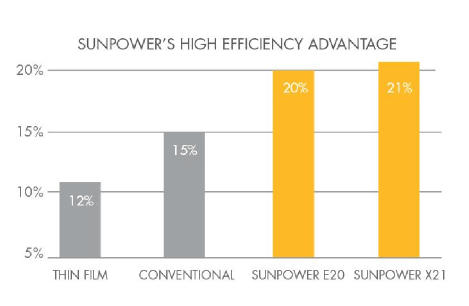Solar has been around since the 1950’s and has long been embraced by environmentalists and solar science enthusiasts alike. But, with the cost of traditional electricity on the rise in recent years, this once-fringe technology has gone mainstream with a reported total of 700,000 households in the US alone sporting solar panels (1).
 But, why? What has inspired this massive shift from traditional power to alternative energy? Tom Kimbis, a SEIA VP, recently stated, “The vast majority of residential installations...are done because solar is affordable and it’s saving [people] money” (1).
But, why? What has inspired this massive shift from traditional power to alternative energy? Tom Kimbis, a SEIA VP, recently stated, “The vast majority of residential installations...are done because solar is affordable and it’s saving [people] money” (1).
As time passes, the cost and the time necessary to complete a solar installation decreases, driving the average cost of solar down. Combine this with the savings provided by the federal tax credit, it is easy to see why so many frugal citizens are making the switch to solar (1).
Many may be hesitant to make the switch because they are unsure of what goes into a residential solar installation. That’s why Green Convergence has put together this short guide to going solar so you know exactly what is involved, before you start shopping.
Step 1: Mounting the panels to your roof
With the expertise of a Master Dealer like Green Convergence, the installation of a solar mounting system becomes a quick and easy process that is also safe for your roof. Depending on the results of your shading study, your solar installation company will decide the best placement for your panels and mounting system.
Then you will sign a contract and set a date to have the mounting system and solar panels installed. When purchasing rooftop solar, make sure the company installing your solar:

A) Offers panels with industry-leading efficiency and warranties.
B) Knows how to treat your roof. The last thing you want are panels that may fail and a roof that may leak.
Step 2: Installing your inverter
Since home battery systems aren’t available to the public yet, solar energy systems also require an inverter. Inverters “take the energy captured by the [solar] cells and convert it from Direct Current (DC) into Alternating Current (AC)”, as homes and the electric grid require AC (1). The inverter allows any excess power from your solar energy system to be sent back into the grid. This is a major plus because, in some cases, you can sell that excess energy back to the utility company (1).
Step 3: Payment Strategies
There are typically three different solar payment options for varying budgets—an outright purchase, PPA, and lease. Now we can’t tell you which payment program will best suit your needs. That is a decision only you and your financial advisor can make. But we can tell you that, “homeowners who buy their own system can receive a federal investment tax credit worth 30% of their system[’s] price” (1). Homeowners planning to lease their system can “receive a credit of 10%” (1). A PPA basically makes your solar installer your new utility company; they own your solar energy system and you pay them for the power you use (1).
Though it may seem overwhelming, once you decide on the right installer and the payment plan that is right for you going solar is a simple process. It is a solar company’s duty to make sure that your installation goes smoothly and to make sure your investment lasts.
Some companies may disagree but that’s what we believe here at Green Convergence. We are always happy to answer questions over the phone or in-person for anyone interested in solar, with no pressure to sign or buy. As a local company, we want to give back to our community and be a resource for anyone who is trying to save money by making the switch to solar.
Source:
http://time.com/3933638/solar-panels-house/

